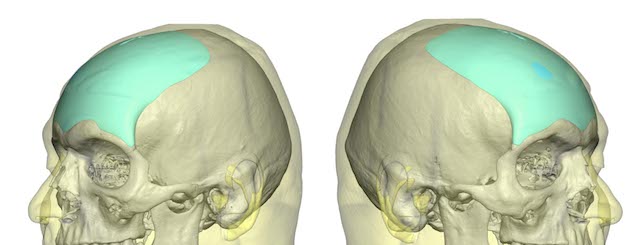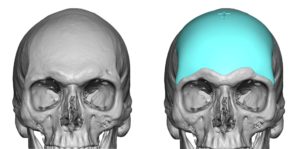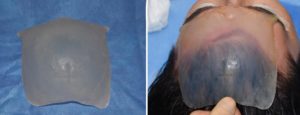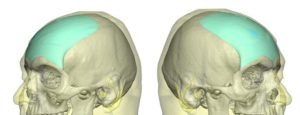Background: Aesthetic shape deformities of the upper third of the male face can involve the forehead, brow bone or some combination of both. When it is a forehead issue it can be one of excessive bony prominence (like forehead horns or bossing) or lack of bony projection. (backward sloping forehead or a forehead that is too narrow)
The backward sloping forehead is most commonly seen in men in my experience. It occurs in isolation with good brow bone projection but is also frequently seen when there is brow bone prominences. In male brow bone reduction it is frequently overlooked and assumed to only look so because of the excessive horizontal projection of the brow bones. But computer imaging of the proposed brow bone reduction in profile view before surgery can help the patient determine whether the slope of the forehead above the brow bones is adequate or not.
In male forehead augmentation the biggest challenge is the location and extent of the incision needed to do so. Besides having preoperative control of the forehead shape and dimensions, a custom forehead implant allows for the smallest placement incision to be used to place it. The key in its successful placement is to be able to work with the elastic deformation property of the silicone implant material.
Case Study: This male had a prior history of brow bone reduction through a central pretrichial (hairline) incision. His 3D CT scan showed that this was minimal burring reduction and not a bone flap setback technique. Imaging measurement of his forehead slope was just under 50 degrees.
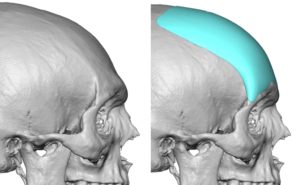
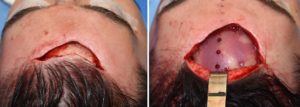
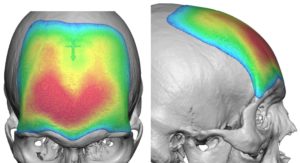
Case Highlights:
1) Forehead augmentation in a male is typified when there is a backward sloping forehead with adequate brow bone projection.
2) A custom forehead implant approach provides the smoothest design with assured feather edging that can be placed through the smallest scalp incision.
3) Most forehead implant designs for correction of a slope must extend further back along the skull than now would think for a confluent and natural appearance.
Dr. Barry Eppley
Indianapolis, Indiana

